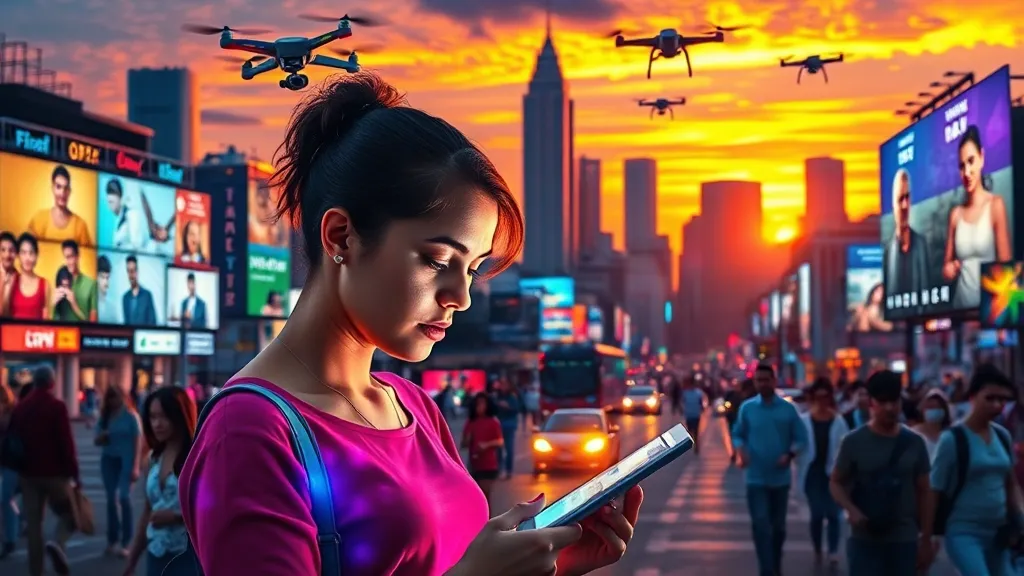The Digital Kaleidoscope: How Integration Transforms the Marketing Landscape
So, let’s chat about this whole integration thing in digital marketing. It’s like mixing your favorite smoothie, right? You toss in a bit of fruit, maybe some yogurt, and voilà! You’ve got a delicious blend that’s way better than each ingredient alone. That’s kinda how integrated digital marketing works—it’s all about combining different channels and strategies to create a cohesive experience that just makes sense.
In 2025, it feels like integration is the name of the game. We’re not just throwing ads out there and hoping for the best anymore. Nope, it’s about connecting the dots between social media, email, content marketing, and even good ol’ SEO. All these elements work together like a well-oiled machine, or at least, that’s the dream, right? When they sync up, it’s magic. Brands can tell a story that resonates, engage audiences more deeply, and, let’s be real, boost those conversion rates.
- Consistency is Key: Ever notice how some brands just get it? Their messaging, visuals, and tone are all aligned. That consistency helps build trust with customers. If you’re all over the place, people might think you don’t really know what you’re doing. Yikes!
- Data-Driven Decisions: Integration means you can collect data from various channels and actually make sense of it. You can see what’s working, what’s not, and adjust your strategy accordingly. It’s like having a cheat sheet for your marketing efforts.
- Customer-Centric Approach: When you integrate your marketing, you can better understand your audience’s journey. You know, that winding road they take before hitting that buy now button. It’s all about making their experience smoother and more enjoyable.
Honestly, I think the coolest part of all this is how it empowers smaller businesses. Before, if you didn’t have a massive budget, it felt like you were at a disadvantage. But with integrated strategies, even the little guys can pack a punch. They can create targeted campaigns that feel personal and engaging, even if they don’t have the resources of a big corporation.
In a nutshell, integration isn’t just a buzzword—it’s reshaping how we think about marketing. So, if you’re not already on board, it might be time to hop on the train. Just don’t forget to bring your smoothie blender!
From Silos to Symphonies: The Art of Harmonizing Strategies
Alright, let’s dive into something that’s been on my mind lately: the whole idea of integrating digital marketing strategies. You know how sometimes you’re trying to juggle a bunch of things at once and end up dropping half of them? Yeah, that’s what happens when your marketing efforts are all over the place. Instead of working together, they’re just kind of… there. Not cool, right?
In 2025, the key to success isn’t just having a bunch of separate strategies for social media, SEO, email marketing, and all that jazz. It’s about creating a beautiful symphony where each part plays its role in harmony. Think of it like a band—if the drummer’s off beat, the whole song kinda falls apart. When your strategies don’t talk to each other, it’s like a really awkward dinner party where no one knows what to say.
So how do we go from these marketing silos to a cohesive strategy? Well, for starters, communication is everything. Teams need to share insights and data. If your SEO guru isn’t letting your content creator know about the latest keyword trends, then you’re missing out. It’s like trying to bake a cake without sharing the recipe. Yikes! No one wants a baking disaster.
Another thing is consistency. Your brand voice should be the same across all platforms. I mean, if your Instagram is all playful and quirky, but your email newsletters are boring and stuffy, it’s gonna confuse your audience. They’ll be thinking, “Who are you, and what do you want from me?” Just keep it real and relatable, folks.
- Data-Driven Decisions: Use analytics to understand what’s working and what’s not.
- Cross-Channel Engagement: Encourage your audience to interact with you on different platforms.
- Feedback Loops: Regularly gather feedback to fine-tune your approach.
At the end of the day, it’s all about creating a seamless experience for your audience. When they feel like everything is connected, they’re way more likely to stick around. So, let’s ditch the silos, embrace the symphonies, and make some beautiful marketing music together. Who knows, maybe you’ll even start a chart-topping hit in your industry!
Navigating the AI Frontier: Personalization Meets Automation
Okay, let’s chat about AI. It’s like that friend who shows up at the party uninvited but somehow makes everything more interesting. In the world of digital marketing, AI isn’t just a cool buzzword—it’s transforming how brands connect with their audiences. Seriously, we’re talking about personalization on a whole new level.
Imagine you’re scrolling through social media, and bam! There’s an ad for that quirky gadget you just mentioned in passing to a friend. Spooky, right? But that’s the magic of AI-driven personalization. Algorithms analyze your behavior, preferences, and even those sneaky little cookie trails you leave behind. This means brands can tailor their messages to fit you like your favorite hoodie.
- Data-Driven Insights: AI sifts through mountains of data (like, way more than I can ever process) to give marketers insights into what their audience really wants. It’s like having a crystal ball, minus the weird fortune teller vibes.
- Dynamic Content: With automation, content can be adjusted in real-time. So if you’re into eco-friendly products today but might be swayed by the latest tech tomorrow, brands can change their game plan on the fly.
- Enhanced Customer Experience: Ever had a chat with a chatbot that didn’t make you want to pull your hair out? Well, AI is getting there! Better customer interactions lead to higher satisfaction, and that’s a win-win.
But here’s the kicker: while AI can handle a lot, it’s not about replacing the human touch. I mean, no robot can truly understand the joy of a perfectly brewed cup of coffee or the warmth of a genuine smile. Brands still need to inject that human element into their strategies.
So, as we navigate this AI frontier, let’s embrace the automation while keeping our personal flair. After all, it’s not just about data; it’s about connecting with real people on the other side of the screen. In 2025, the brands that thrive will be the ones that find that sweet spot between tech and touch. And who knows? Maybe AI will even help us find better coffee spots!
The Future is Now: Embracing Change and Driving Engagement
You know, it’s wild to think about how fast things are changing in the digital space. Just when you think you’ve got a handle on it, bam! Something new pops up. It’s like trying to catch a greased pig at a county fair—just when you think you’ve got it, it slips away. But seriously, adapting to these changes is crucial if we want to keep our brands relevant and engaging.
Engagement isn’t just a buzzword; it’s the heartbeat of successful digital marketing. In 2025, we’re seeing brands that genuinely connect with their audience rise above the noise. People crave authenticity, and if you’re not offering that, you might as well be shouting into the void. So, how do we do this? Well, it starts with knowing your audience. Really knowing them, like the difference between a coffee lover and a tea drinker. What are their interests? What makes them tick? The more you understand them, the better you can tailor your message.
- Personalization: It’s not just a nice-to-have anymore; it’s a must. Customers expect brands to know their preferences. Think Netflix—ever notice how they recommend shows that you actually want to watch? It’s like they’re reading your mind!
- Real-time interaction: Social media is a fast-paced world. If you don’t engage with your audience when they reach out, you risk losing them. Imagine sending a text to a friend and then waiting a week for them to reply. Awkward, right?
- Embracing technology: From AI chatbots to AR experiences, leveraging new tech can enhance engagement. Just think about it—who doesn’t love trying on sunglasses virtually? It’s like being in a sci-fi movie!
Look, I get it—change can be scary. But it can also be exciting! If we lean into these shifts and really embrace them, we can create a marketing strategy that not only drives engagement but builds lasting relationships with our audience. So, let’s roll up our sleeves and dive into the future together. The time for change is now, and trust me, you don’t want to be left behind playing catch-up while everyone else is having a blast!

